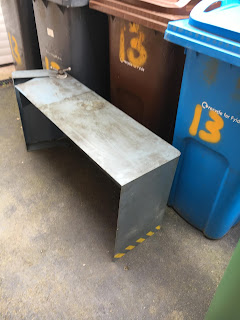A few more pictures for future reference:
Geneva mechanism:
Front switch box:
Relay board. Later models, such as those described in the schematics have triacs instead of relays. This is all done with diodes and relays.
Simple linear regulator (LM340K-12 is a 12V 1.5A jobby), with date code 7812 ie it was manufactured in week 12 of 1978. And yes, that's a 555 timer. It's obviously been replaced, hence the socket and RS part number. But even so, I reckon that places it in the 80s - back then, RS insisted on obliterating any manufacturer's part number by overwriting it with their own, so consequently there is no date code on it.
This cam assembly causes the stacks of microswitches to switch at key positions of the primary movement. Presumably in conjunction with the various diodes on the PCB, they cause the relays to actuate and thus operate the solenoids appropriately.
The big cylinder thingy is the mechanical arm / claw assembly. The operation is described in detail in the patent.
The claw defaults to a position next to the spindle when installed
Everything is covered by this housing.
Finally in the workshop. Nobody died.
The toolholder "cups" are held on the chain which is driven by the Geneva mechanism.
This manifold assemblies comprises all the various regulators and solenoids.
The Geneva mechanism is moved by this motor. It has 4 wires (and no nameplate) so that the direction can be controlled. I assume it's a 110VAC universal motor but it could just about be 24VDC. Perhaps I can trace the wiring back and deduce which...
The flexible snake thing contains the pneumatic pipes for the claw open and close movements.
The drip oiler is supposed to deliver something like 1 drop per hundred hours. Obviously it emptied itself within a week. When you operate the piston, it comes out the exhaust, making a mess.
And there you have it....
































No comments:
Post a Comment